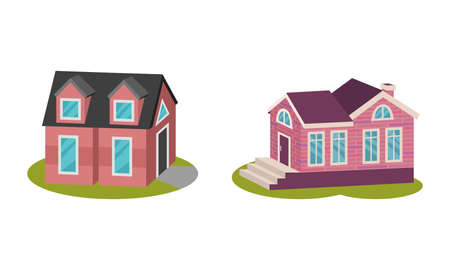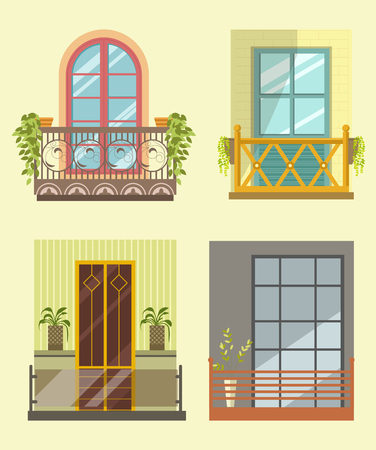Understanding British Colour Theory: A Historical Perspective
British colour theory has evolved significantly over the centuries, mirroring the nation’s shifting social, political, and cultural landscape. The interplay between architecture and aesthetics has always been pronounced in the UK, with each era developing its own distinctive palette inspired by prevailing tastes, available pigments, and broader European trends. During the Georgian period, for example, muted earth tones and refined pastels became emblematic of sophisticated taste, reflecting Enlightenment ideals of balance and harmony. By contrast, the Victorian era embraced richer hues—deep greens, burgundies, and blues—that conveyed both opulence and the technological advances of the Industrial Revolution. Fast forward to modern times, British homes now showcase a blend of tradition and innovation: contemporary palettes often revisit historical colours but reinterpret them for today’s lifestyles, combining heritage charm with a fresh sensibility. This journey through British colour history not only reveals how external influences—from colonial trade to artistic movements—have shaped domestic aesthetics but also demonstrates a uniquely British approach to creating timeless interiors that balance respect for the past with an eye on future trends.
2. Victorian Colour Palettes: Richness, Depth, and Detail
The Victorian era marked a turning point in British interior design, where colour theory evolved dramatically to reflect the era’s fascination with opulence, artistry, and technological innovation. Victorians embraced rich, saturated hues and elaborate wall treatments that spoke to both their social aspirations and appreciation for detail. If you’re considering reviving an authentic Victorian look in your home, understanding the period’s signature palettes and finishes is essential.
Popular Victorian Hues
Victorian interiors were characterised by layered colours, often inspired by natural dyes and the industrial revolution’s advances in pigment production. Deep greens, burgundies, navy blues, and ochres were favoured for their warmth and gravitas. Muted pinks, sage greens, and dusky lilacs were also common in more feminine or private spaces such as bedrooms and drawing rooms. For those seeking an investment-minded approach, these colours not only enhance historical authenticity but are also seeing a resurgence in contemporary design trends across the UK property market.
| Room Type | Recommended Colours | Typical Finishes |
|---|---|---|
| Drawing Room | Burgundy, Olive Green | Matte, Damask Wallpaper |
| Dining Room | Navy Blue, Gold Accents | Satin Paint, Wood Panelling |
| Bedroom | Sage Green, Dusky Pink | Eggshell Paint, Stencilling |
| Hallway/Staircase | Ochre, Deep Red | Limewash, Lincrusta Relief |
Advice for Recreating Authentic Period Looks
To achieve a truly Victorian aesthetic in your British home, opt for paint shades with depth—avoid modern brights or stark whites. Layering is key: consider painted walls paired with patterned wallpapers or friezes for added detail. When selecting paints, choose heritage ranges from trusted UK brands that specialise in period-accurate pigments; these will provide the subtle nuances needed to evoke genuine Victorian style. Don’t shy away from combining bold wall colours with ornate woodwork and gilded accents—this interplay was central to Victorian taste and offers strong visual impact that resonates well in today’s competitive housing market.
Investment Perspective: Why Victorian Colours Matter
Restoring or replicating Victorian colour schemes can increase your property’s desirability among buyers who value historical authenticity. In many sought-after British neighbourhoods—particularly those filled with period properties—attention to authentic palettes is not just about aesthetics but about preserving architectural heritage and maximising long-term value.
Pro Tip:
If you’re blending period features with modern comforts, use deep Victorian shades as feature walls or within alcoves to create focal points without overwhelming contemporary furnishings—a strategy increasingly popular among UK interior designers aiming for both character and liveability.

3. Georgian Elegance: Subtle Tones and Symmetry
The Georgian era, spanning from the early 18th to early 19th centuries, is celebrated for its refined approach to colour and architectural harmony. Unlike the richer, more dramatic hues of later periods, Georgian interiors favoured a muted palette characterised by subtle sophistication and timeless appeal. Soft greys, gentle blues, earthy stone shades, and delicate sage greens were common choices, reflecting both the influence of classical antiquity and advances in paint technology during the period.
Traditional Paint Finishes
Authenticity in a Georgian-inspired scheme lies not only in colour selection but also in finish. Lime wash and distemper were widely used, lending walls a soft, powdery appearance that diffused natural light and added depth to otherwise understated tones. These finishes allowed rooms to feel bright and spacious—a deliberate contrast to the often gloomy British weather—while also highlighting the quality of natural materials like timber and plaster.
Symmetry in Design
Georgian aesthetics are deeply rooted in symmetry and proportion, principles borrowed from Palladian architecture. Walls were typically divided by dado rails or panelling, with colours chosen to enhance these architectural details. For instance, darker hues might be used below the dado to ground a room, while lighter shades above created an airy effect. Ceilings were usually painted off-white or pale blue-grey to reflect candlelight and visually lift the space.
Adapting Georgian Style for Modern Homes
To echo Georgian elegance in contemporary interiors, focus on balance and restraint. Opt for chalky finishes or modern equivalents like matt emulsions that replicate historic textures. When selecting your palette, consider pairing muted wall colours with crisp white woodwork to create contrast without overpowering subtlety. Incorporate classic elements—such as symmetrical layouts, decorative cornicing, or panelled doors—to reinforce a sense of order and grace within your living space.
While staying true to tradition is key for period properties or restoration projects, dont shy away from introducing modern accents. Soft metallic accessories or contemporary art can sit beautifully against a backdrop of Georgian-inspired tones, ensuring your home remains both stylishly British and comfortably up-to-date.
4. Modern British Homes: Tailoring Palettes for Today
Modern British interiors are a dynamic blend of tradition and innovation, reflecting the evolving tastes of UK homeowners while respecting their architectural heritage. Today’s market favours an eclectic yet curated approach, where classic undertones meet bold statements to create spaces that are both timeless and on-trend. Understanding current colour theory in the UK is essential for anyone looking to add value and style to contemporary properties.
Current Trends in UK Interior Colour Palettes
The demand for heritage-inspired shades—think muted sages, deep navy, and soft greys—remains strong, but there’s a growing appetite for confident pops of colour such as mustard yellow, terracotta, and peacock blue. These choices reflect a desire for individuality without sacrificing the understated elegance associated with British homes.
Practical Paint Advice for Modern Spaces
| Palette Style | Key Colours | Best Used In | Market Appeal |
|---|---|---|---|
| Heritage Neutrals | Dove Grey, Sage Green, Soft Cream | Living rooms, Bedrooms | Broad appeal; enhances resale value |
| Bold Accents | Indigo Blue, Mustard Yellow, Coral Red | Kitchens, Hallways, Feature Walls | Younger buyers; injects personality |
| Earthy Moderns | Terracotta, Olive Green, Warm Taupe | Bespoke bathrooms, Dining areas | Eco-conscious; feels grounded and fresh |
| Moody Darks | Charcoal Black, Aubergine, Forest Green | Snugs, Studies, Dramatic Entrances | Luxe feel; niche but trendy sector |
Integrating Classic & Contemporary Tones: Tips for Investors and Homeowners
- Layering: Combine neutral bases with vibrant accessories or feature walls to balance sophistication and flair.
- Zoning: Use colour to define open-plan spaces—a hallmark of modern British design.
- Sustainability: Opt for eco-friendly paints; this appeals to environmentally-aware buyers and adds a unique selling point.
- Cultural Connection: Consider subtle nods to local heritage (e.g., Farrow & Ball’s historic palette) when choosing colours for period conversions.
- Tactile Finishes: Pair matte paints with gloss or satin trims to add depth and character without overwhelming a room.
A thoughtful approach to colour not only elevates modern British homes aesthetically but also drives market interest—making it a key factor in successful property investment and design strategy.
5. Choosing Paints: Specialist Advice and Local Brands
Balancing Authenticity and Practicality in British Homes
When refreshing a period property or updating a modern flat, choosing the right paint is a crucial step towards preserving both authenticity and increasing market value. In the UK, discerning homeowners and investors alike are advised to prioritise paints that offer historical accuracy, environmental responsibility, and long-lasting results. Understanding the nuances of British colour theory—whether you’re restoring a Georgian townhouse or giving a Victorian terrace new life—means selecting paints tailored for these unique environments.
Types of Paints for Every Era
For Georgian and Victorian interiors, traditional matt emulsions or lime-based paints are often recommended to achieve an authentic look while allowing historic walls to breathe. In modern settings, durable acrylic or water-based emulsions deliver versatility and easy maintenance, appealing to contemporary tastes and rental markets. For woodwork and trims, classic eggshell finishes remain popular across all periods, lending a soft sheen without overpowering heritage details.
Eco-Friendly Options for Today’s Conscious Investor
The demand for sustainable living continues to shape the UK property market. Eco-friendly paints—free from VOCs (volatile organic compounds) and harsh chemicals—not only protect your indoor air quality but also appeal to eco-minded buyers and tenants. Look for brands carrying certifications like EU Ecolabel or British Standard 4310 for peace of mind. Many leading British manufacturers now offer vegan, cruelty-free formulas made with natural pigments, ensuring both environmental stewardship and period-appropriate colour depth.
Trusted British Paint Brands
Investing in established local brands is a savvy move for anyone looking to combine authenticity with lasting value. Farrow & Ball is renowned for its meticulously researched historical palettes, perfect for period homes. Little Greene offers eco-conscious choices rooted in archival colours. For high-traffic areas demanding robust performance, Dulux Trade remains a go-to among professionals for both durability and breadth of choice. For those seeking artisan finishes, Edward Bulmer Natural Paints delivers rich hues crafted with sustainability at their core.
Market Insight: The Value of Specialist Paint Choices
Properties finished with high-quality, appropriate paints frequently command premium valuations in the UK market, particularly when period features are sympathetically preserved. By opting for reputable British brands and sustainable options, homeowners can futureproof investments while meeting the evolving expectations of buyers and tenants alike.
6. Investment Tips: Maximising Value with Colour in Different Eras
When it comes to boosting property value in the UK, a strategic approach to colour selection can be as impactful as location or square footage. For investors and homeowners alike, understanding how to balance period authenticity with modern appeal is key to standing out in Britain’s competitive housing market. Here are some market-savvy tips for maximising your return while staying true to the character of Victorian, Georgian, and Modern homes.
Respecting Historical Authenticity
Properties with well-preserved period features often command a premium. When decorating Georgian or Victorian homes, opt for historically accurate palettes—think muted blues and sage greens for Georgian spaces, or deep reds and rich creams for Victorian interiors. These choices not only enhance architectural details but also signal a commitment to quality restoration, which is highly regarded by discerning UK buyers.
Blending Heritage with Contemporary Tastes
While authenticity is prized, incorporating subtle contemporary touches can broaden appeal without alienating purists. For example, pairing traditional wall colours with modern accent shades or finishes helps bridge eras gracefully. In Modern homes, don’t shy away from bold statement walls or monochrome schemes; these are in demand among urban buyers seeking a fresh look that still respects British design sensibilities.
Colour as a Value-Adding Asset
Neutral tones like warm greys, soft taupes, and classic whites remain best-sellers because they offer a blank canvas for prospective buyers—helping properties sell faster and often at higher prices. However, don’t underestimate the power of feature colours in key spaces: a deep navy front door or heritage green kitchen cabinetry can create memorable first impressions that translate into real value.
Regional Considerations
The UK’s diverse regions have distinct architectural styles and buyer preferences. Cotswold cottages benefit from earthy hues and traditional stone-inspired palettes, while London terraces may perform better with bolder contrasts or contemporary takes on period colours. Research local trends before making investment decisions—what sells in Bath may not work in Manchester.
Long-Term Trends and Sustainability
Sustainability is an increasing priority among UK buyers. Eco-friendly paints and timeless colour selections signal thoughtful stewardship—a trait that boosts desirability and long-term value. Choose high-quality finishes that endure both stylistically and physically, reducing future redecoration costs for you or future owners.
Ultimately, whether restoring a Georgian townhouse or updating a Modern flat, your paint choices should reflect both the property’s heritage and today’s market realities. With careful planning and an eye for British colour theory, you’ll ensure your home appeals to the broadest audience—and commands the strongest returns.


